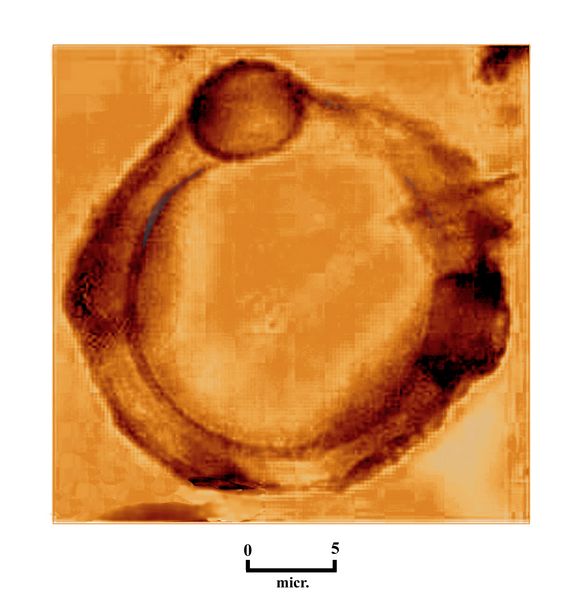Athena Review Image Archive ™
Eosphaera tyleri

Eosphaera tyleri (after Barghoorn and Tyler 1965).
Eosphaera tyleri is an early Precambrian prokaryote from Canada.
The first well-preserved Precambrian fossils of individual prokaryotes (primitive, bacteria-like organisms with non-nucleated cells) were reported in the mid-20th century, with the discovery by Tyler and Barghoorn (1954) of an assortment of fossil prokaryotes dating from about 1.9 billion years ago. These were found in the Gunflint chert Formation of Ontario, Canada near Lake Superior.
Some of the microscopic fossils preserved in the Gunflint chert were cyanobacteria, and other forms seemed completely new. Eosphaera tyleri, shown here, has an inverted
bowl-shaped or semi-globular form with a diameter of about 25 microns. There are 3-4 small round growths
equidistantly spaced around the perimenter, which may represent
budding.
References:
Barghoorn, E.S. and S.A. Tyler 1965. Microorganisms from the Gunflint chert. Science 147, pp. 563-577.
.Copyright © 1996-2020 Rust Family Foundation (All Rights Reserved).